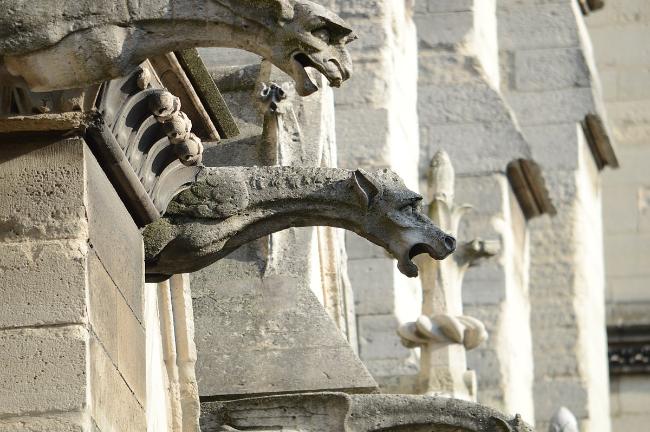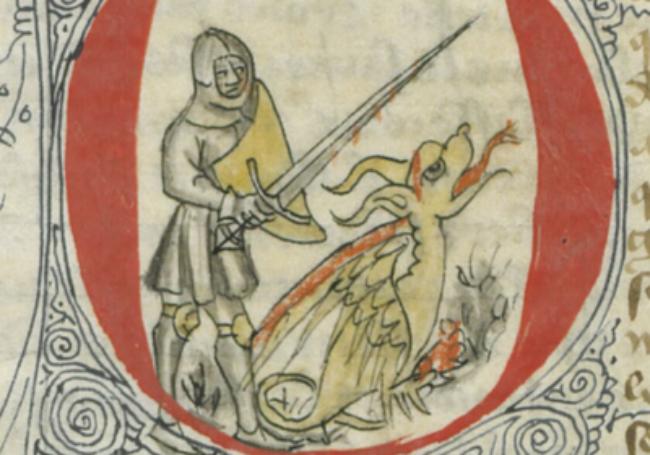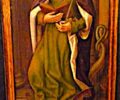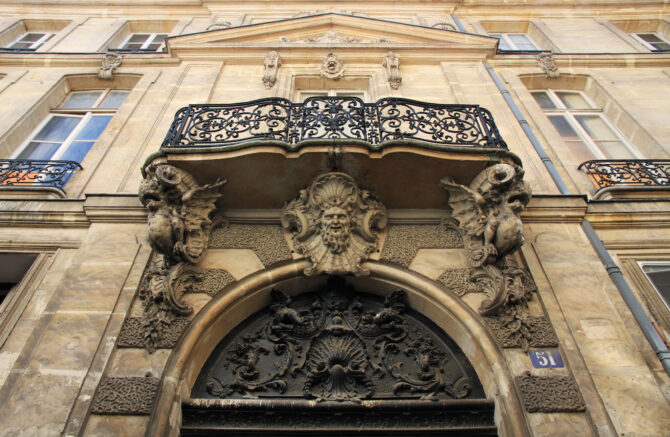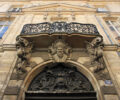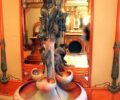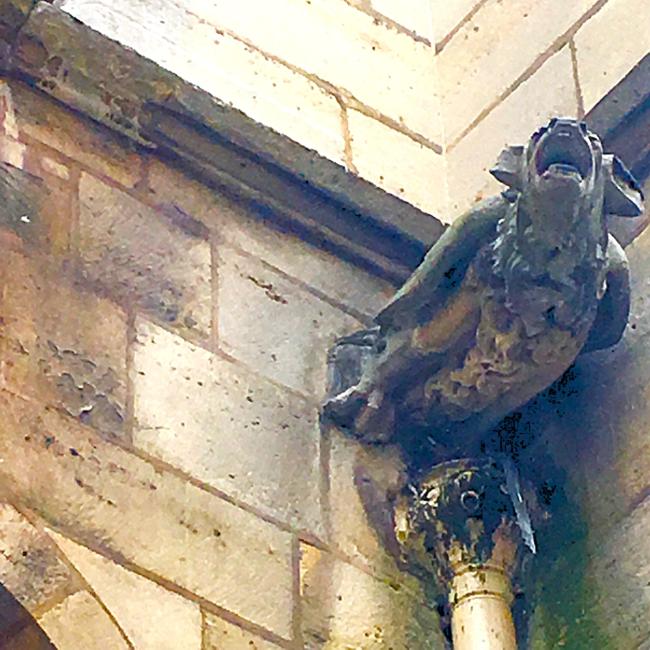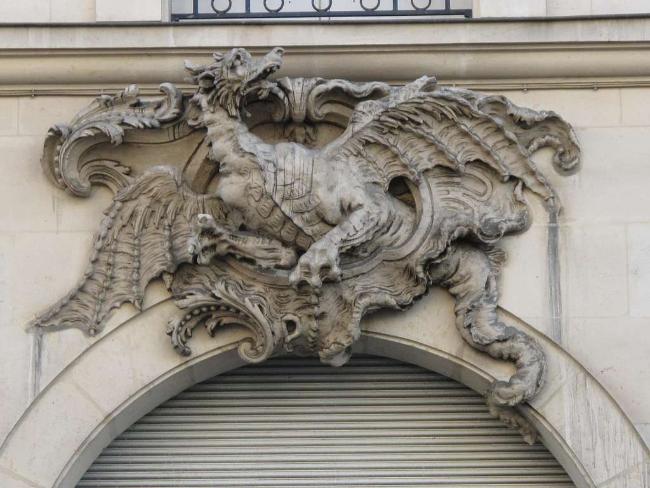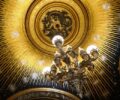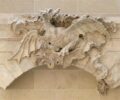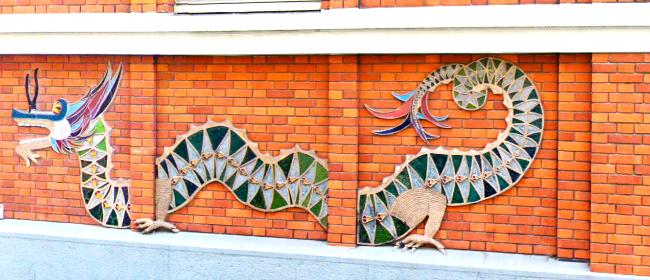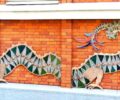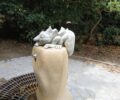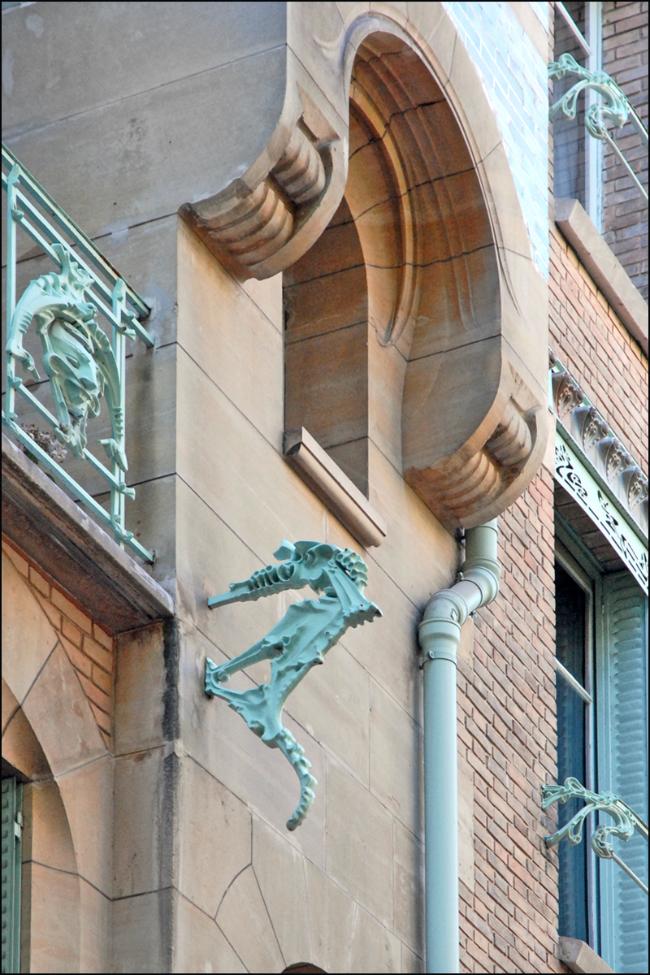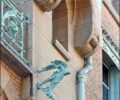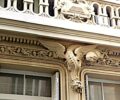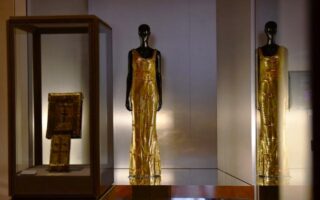Dragons in Paris: Spot the Chimeras New and Old
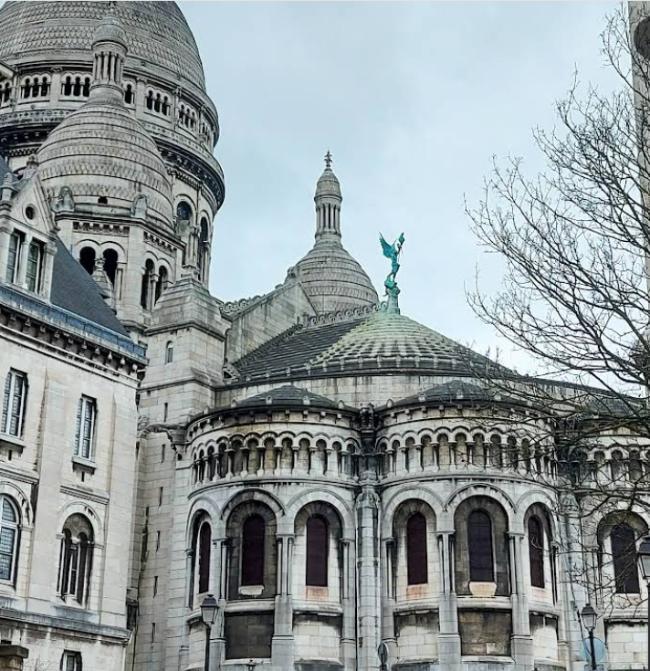
- SUBSCRIBE
- ALREADY SUBSCRIBED?
BECOME A BONJOUR PARIS MEMBER
Gain full access to our collection of over 5,000 articles and bring the City of Light into your life. Just 60 USD per year.
Find out why you should become a member here.
Sign in
Fill in your credentials below.
The medieval world, whether historical or reimagined, is enjoying unprecedented popularity. Game of Thrones and the House of the Dragon are epic screen fantasies set in a world of medieval legends, where both peasants and royalty cower under the constant threat of dragons. Dreamworks tame Dragon franchise arose from the 2010 movie How to Train Your Dragon. The Middle Ages, once perceived as foreboding, dark and violent, are now a fertile source of inspiration. There are dragons to be found throughout the city of Paris, some as old as Quasimodo, and some brand new chimeras, brilliantly demonstrated in contemporary art and architecture. Paris can be a scavenger hunt for these winged beasts, for explorers young and old.
Dragons, grotesques, and gargoyles watch over Paris from their perch on Notre Dame. Used as decorations and waterspouts since ancient times, these mythical figures did double duty creating fear in the medieval residents of Paris. As reminders of the battle between good and evil, they leered down at the faithful seeking refuge within the cathedral itself. These gargoyles were some of Notre Dame’s most enchanting and recognizable features; however many of the strange and grimacing faces did not withstand the devastating fire of 2019. Today, if you look way up you’ll see that a team of sculptors have recreated many of the figures, identical in every detail. The gargoyles, including dragons, can be seen up close. There are 387 steps to reach Notre Dame’s Chimera Gallery.
Museum of the Middle Ages
The Musée de Cluny is an excellent place to see medieval art and artifacts. Alongside their renowned tapestries of gentle unicorns, the Cluny’s permanent collection is at present enriched with temporary tributes to other fantastical beasts. Scattered throughout the museum’s normal visitor route, the exhibit “Summon the Chimeras” has placed 15 – rather tenuous – interpretations by contemporary artists, whose animal and hybrid forms could be construed as modern takes on the dragon myth. There’s a touch of the supernatural here as well as a whiff of goth. Talismanic votives, and reliquaries are reminiscent of the tarot. A multi-colored mixed-media tower is like a medieval totem-pole. One work of art is rendered in human blood, whereas anthropomorphic drinking cups are, alas, merely filled with blood-like liquid. The show runs until July 20th.
28 rue Du Sommerard, Paris 5th
Surprising Statue in the Street
The Defender of Time is an automated work by French artist Jacques Monestier, located at 8 rue Bernard-de-Clairvaux in the 3rd arrondissement of Paris. To a soundtrack of wind and waves, a breathing brass dragon fights alongside a rooster and a crab, as a sword-wielding mechanical soldier wards them away from his timepiece. Le Défenseur du Temps, made of hammered and gilded brass, stands four meters tall. When installed in 1979, these automatons enlivened this colorless square, and gave rise to the name Quartier de l’Horloge. Out of commission for 20 years, the restored clock and its kinetic warrior have only recently clanked back into life. They awaken at the top of every hour between 9am and 10pm.
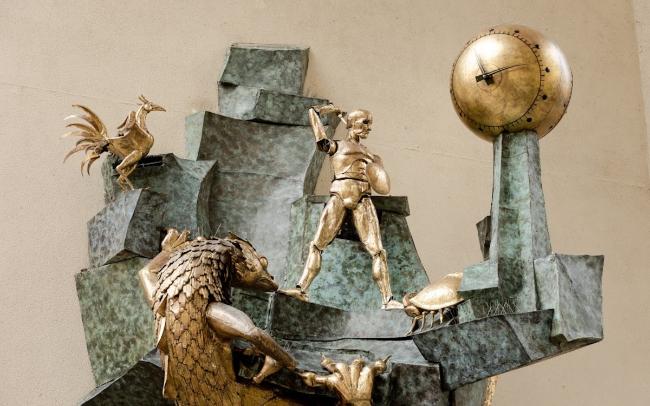
Le Défenseur du Temps. Photo: City of Paris
Bijous in the Carnavalet
The Fouquet-Mucha jewelry boutique installed at the Musée Carnavalet hides some small dragons. George Fouquet, jeweler extraordinaire, commissioned the preeminent designer Alphonse Mucha to fashion all aspects of his new premises on the prestigious rue Royale. Mucha was given carte blanche for both the interior and exterior of the shop, furniture, lighting, fittings, and display cases. Mucha created a space that just drips with the stained glass and organic motifs that have come to symbolize Art Nouveau. In the shop recreated at the Carnavalet is a fountain topped with a Belle Époque beauty and protected by a column of angry dragons. It’s not much of a dragon sighting, but entrance to the incredible museum, which explores every facet of Parisian history, is free of charge. 23 rue Madame de Sévigné, 3rd
Dragons bear the weight of a balcony at 133 rue Saint Antoine (4th). The once private dwelling of Pierre Séguier, a name found in the pages of Dumas’ Three Musketeers, the real-life chancellor to Kings Louis XIII and XIV, built this mansion circa 1626. Later in 1728, the building received this type of fantastic sculptural decoration. Today it’s home to the aptly named café Les Chimères.
Also found in the 4th arrondissement, at 51-53 rue Saint-Louis-en-l’Île, is the elaborately decorated hôtel particulier known as the Hôtel de Chezinot. The buildings on the Île Saint-Louis date from the 1600s, but in 1719, M. Chezinot hired an architect to transform his building into something memorable, and installed a balcony and decorated the street façade. Today two Chinese chimeras, flanking the symbolic image of the green man, hold up the first-floor balcony. In the 1840s, the mansion was home to the archbishop of Paris.
Gargoyles and Fountains
The Eglise Saint-Severin is a three-minute dogleg path from Shakespeare and Company. The church remains unnoticed by the myriad passersby looking for a souvenir or a schwarma in the densely packed area around Rue de la Huchette. But if you find yourself on the rue des Prêtres Saint-Severin, crane your neck and look up to see some of the most tormented dragon gargoyles in the Paris. The church is dedicated to a hermit called Severinus, who prayed in a small chapel on the site as long ago as the 6th century. The fourth iteration of Saint Severin with its flamboyant gothic architecture and dragons was finished in 1520.
Fontaine Saint-Michel is an awe-inspiring monument, metaphorically symbolizing the triumph of good over evil as the majestic bronze Archangel vanquishing the devil. The central sculpture is flanked by two water-spouting chimeras, hybrid creatures with a lion’s head, dragon wings and a serpent’s tail. These two-winged dragons were designed by Henri-Alfred Jacquemart, but a total of nine sculptors contributed to the fountain’s opulence. Inaugurated in 1860, the fountain suffered from major damage during the Paris Commune, just a decade later. One hundred years in the future, this location saw the May 1968 riots, where students used it for their rallying spot, declaring it an “independent state.” It did not stay so for long, but their actions triggered mass strikes across France, which threatened De Gaulle’s government. Since 1926, Saint Michael’s fountain has been listed as a Historical Monument.
House of Dragons
Once upon a time, there was a place known as the Cour du Dragon in Paris’s 6th arrondissement. Alas, despite being allocated as a historical monument, the alley was destroyed in 1934. However, the dragon sculpture which once indicated the courtyard entrance remains on the keystone arch at 50 Rue de Rennes, a relic of old Paris. Once a conglomeration of artisans, the author Victor Hugo had a place at No. 30. The court was redeveloped in the 1950s and behind those blue doors is a tidy, private little park, frustratingly for the use of residents only. An identical dragon relief, designed by Paul-Ambroise Slodtz in 1732, has been saved from demolition, and is seen in Salle 105 of the Louvre.
The building at 53 rue des Mathurins in Paris’s 8th arrondissement, could be called the “house of dragons” as two beautiful examples sit atop the corner entrance. Holding up pediments on the rue Anjou side of the building are other dragon-like creatures, which resemble winged garudas from Indonesia. These exotic decorative elements stem from the fact that this building was designed in 1927 by architect Paul Farge for a bank with Asian interests. Paul Nadar, son of the legendary photographer, sold photographic equipment here.
At the Opera Garnier a very unobstrusive dragon – or maybe he’s just an angry salamander – lurks on the staircase leading to the second floor. Have a look behind the plinth on the left as you go up. The sculpture is most likely hiding a gas pipe, a reminder of the days before electric light. Symbols of fire and resistance, salamanders also dance on the ceiling of the Opera’s Salon du Soleil.
Surprises in Southern Paris
In a square in the 13th arrondissement of Paris, there’s a dragon writhing through the pavement. Snaking from a wall, its imaginary head is buried deeply underground. Its body of transparent tubes and a long crest of scales partially emerges, revealing pulsating water inside. The Danse de la Fontaine Emergente, is tucked away on the Place Augusta-Holmes on Rue Paul Klee. Commissioned by the City of Paris in 1999, it commemorates the exact site of a former 19th-century water catchment plant. Created by French-Chinese artist Chen Zhen who didn’t live to see his work come to life, the fantastical work was finished by his wife and inaugurated in 2008. If illuminated, it looks like some sort of disco dragon.
Located in the northeast corner of the Square Paul Grimault are the Salamanders of the Bièvre, fountains created to look like chubby baby dragons. The Bièvre, once Paris’s second river, has been long-buried and all that remains are some medallions planted in the pavement. Since 2001, a group of street artists called the Lézarts (lizards) de la Bièvre pay tribute to the river by hosting an art crawl along its course in the 5th and 13th arrondissements. Grimault was an important animator, perhaps this is why the pint-sized dragons are so cute. 28 Rue de la Font à Mulard, 13th.
If you find yourself in the neighbouring 14th arrondissement, there is a ceramic mosaic of a Chinese-style dragon adorning the unassuming brick façade of a 1930s building at 7 Rue du Moulin Vert.
Art Nouveau and Western Paris
Castel Beranger, a residential building at 14 rue La Fontaine, was designed by the world-renowned architect Hector Guimard, and built between 1895 and 1898. It was the first residence in Paris built in the Art Nouveau style. A whimsical bestiary adorns its facades. The shape of a cat is easily recognizable, while the wrought dragons on the front and side facades look more like seahorses.
Also in the 16th arrondissement are charming dragon and chimera-hybrid corbeils on the brick face of 4 rue du Lota. The building was designed by architect Fernand Etienne-Charles Delmas in 1894.
At 11 rue Faustin Hélie, devilish imps and angry chimeras prop up the pediments here and around the corner at Rue de la Pompe.
At the Jardin d’Acclimatation, France’s first leisure park in the Bois de Boulogne, is a completely different type of dragon. This one is a bright red roller-coaster with an Asian motif, called Le Defi du Dragon, or the Dragon challenge.
Dragons in Northern Paris
On the roof of Sacre Coeur is a bronze statue depicting Saint Michael slaying the dragon, once again symbolically triumphing over evil. It’s quite a surprise, seeing the duo from rue du Chevalier-de-la Barre. Standing above the apse, the sculpture is better viewed if you climb the 300 steps to the top. There are plenty of other dragon gargoyles and spouts ringing this fin-de-siecle basilica.
The Jardin du Dragon is a free play area in the Parc de la Villette. There’s been a dragon on this site since the 1970s, before the park was conceived in 1989, and it remains an integral part of the park. There is now a third iteration of the dragon, which meets all safety codes. Found near the Cité des Sciences, the dragon climbing structure is made from colored metal of various heights and levels with a long slide where the beast’s tongue should be. There are also climbing nets, swings and seesaws, and part of the Dragon Garden is accessible to children with reduced mobility.
Agence Jouin Manku was commissioned by the Société Foncière Lyonnaise to develop a new wing for their headquarters. They came up with a design called IN/OUT. Topping this addition is a curving iridescent roof made from materials, which resemble the scaled bodies of a pair of dragons. It’s stunning, but sadly mainly visible from the Stade Le Gallo, not so much from the street.
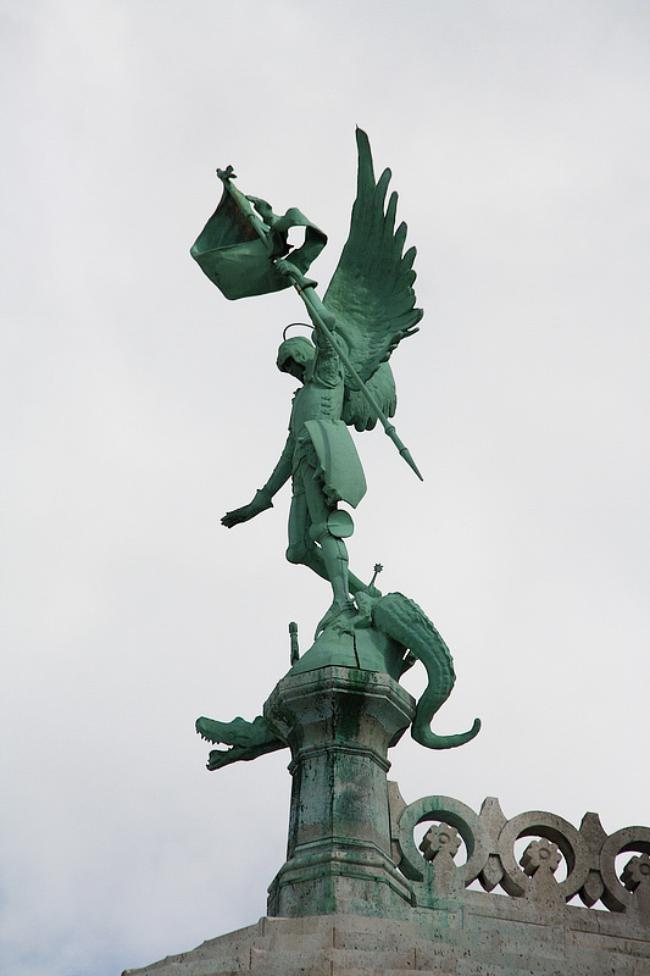
Statue of Saint Michael on the Sacré-Cœur de Montmartre. Photo: jeffwarder/ Wikimedia commons
Dragon Day Trips
Go a little farther afield where a dragon writhes in the Bassin de Dragon at the Palace of Versailles. What’s he upset about? The sculpture represents an episode from the legend of Apollo in which a serpent named Python was pierced by the young god’s arrow. Shooting a jet of water 90 feet into the air, it is known that the Dragon Fountain only operated when Louis XIV was present. It’s in good shape for something designed in 1667. Balthazar and Gaspard Marsy are responsible for the design.
Last but not least is the Dragon’s Lair at Disneyland Paris. Under Sleeping Beauty’s castle, visitors are advised to tiptoe through the dark dungeon, La Tanière du Dragon, where the imprisoned serpent only pretends to sleep. Although an animatronic dragon, he looks very “real” and one false move will lead to a rumbling scare.
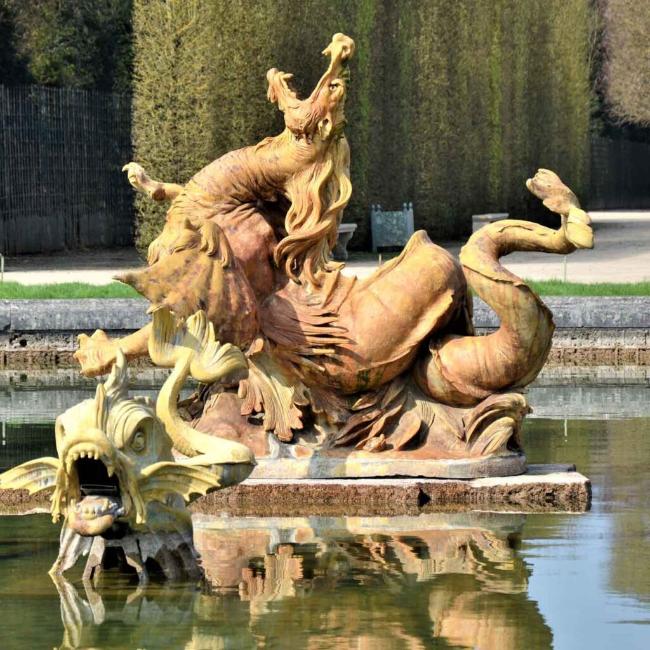
The Dragon fountain at the Palace of Versailles. Image courtesy of the chateau
More in dragons, medieval, middle ages, monuments
